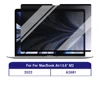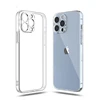Sometimes it feels like Bluetooth 5 is still a fairly new technology, but it was first introduced in 2016. Now, after multiple point releases, the Bluetooth special interest group has released a major new version of the spec: Bluetooth 6.
There are six major new features in Bluetooth 6, most of which are very technical, but here’s a brief summary:
Bluetooth Channel Sounding: lets you determine the direction and range between two Bluetooth devices. In other words, Bluetooth can act a lot like Ultra Wideband does with regard to determining the location of Bluetooth devices.
Decision-Based Advertising Filtering: this should make it faster to scan and find certain Bluetooth devices because your device can find a device on the primary channel and use that info to determine what to look for on a secondary channel.
Monitoring Advertisers: this can improve the efficiency of Bluetooth host devices by making it so they don’t send out multiple “here I am!” packets to connected devices.
ISOAL Enhancement: improves latency and reliability specifically for devices that use the Isochronous Adaptation Layer.
LL Extended Feature Set: devices are currently able to exchange information that says which link layer features they each support. Now that Bluetooth LE has grown, it has become necessary to extend the list to support even more features.
Frame Space Update: lets connection events have variable frame spacing instead of a fixed 150 microseconds. Shorter frame spacing can improve throughput for things like LE Audio devices, fitness trackers, downloading firmware updates, etc.
Channel Sounding is the big new feature
Most of the new features are updates to core Bluetooth functions that should smooth out headaches for engineers working on the low-level connection details of advanced Bluetooth devices, but they’re not going to make a big difference to you or me other than “can sometimes make things a little faster or more reliable in specific situations.”
The first item on that list that is a real user-facing improvement–Bluetooth Channel Sounding basically adds a layer on top of the Bluetooth LE broadcasting stuff that lets devices determine their effective range.
Bluetooth LE already lets devices determine the angle of departure and angle of arrival for signals, so you can know what direction another device is in. With Channel Sounding, you can know its distance as well. In other words, it lets you do what Apple does with Ultra Wideband using its U1 and U2 chips, only in a standards-based way built into Bluetooth without the need for extra hardware.
This will obviously benefit services like Find My–in a few years, most item trackers and Bluetooth devices will have the sort of “precision finding” that Apple’s devices with U1/U2 chips have.
But it’s also a big potential benefit for things like smartphones as car keys or home keys. Your car or front door may be more secure by only unlocking for the correct Bluetooth device that is also within a few feet of range, so drive-by Bluetooth broadcasters with captured keys can’t unlock them from a distance.
When will you see Bluetooth 6 on your iPhone?
Bluetooth 5 was released by the Bluetooth SIG in December 2016, and the iPhone 8 and iPhone X were released with Bluetooth 5 support in September 2017.
Since Apple relies on Bluetooth radios from outside companies (some of which are already shipping preliminary Bluetooth 6 chips), it’s not out of the question to expect the iPhone 17 to feature this technology. If it doesn’t come next year, we will certainly have it in the iPhone 18 in 2026.
While support in host devices like iPhone, iPad, and Macs is a good thing (especially since we are expected to keep these devices for years), Bluetooth 6 will only be useful when device makers start selling Bluetooth 6 devices as well. That can sometimes take a while.





